
Guide To the Diamond Circle
The Diamond Circle in Iceland is a captivating tourist route in northeastern Iceland that encompasses some of the country's most breathtaking natural wonders. This area lies within the Northern Volcanic Rift Zone, where the North American and Eurasian plates diverge.
Covering a total distance of 250 kilometres (155 miles) if completed in its entirety, the Diamond Circle offers a unique and picturesque alternative to the well-known Golden Circle. While the Golden Circle is conveniently situated near the capital, Reykjavík, in southeast Iceland, the Diamond Circle is near Akureyri, "the capital of the North".
Embarking on the Diamond Circle journey opens the door to five prominent attractions that are not to be missed. Delve into details about these remarkable sights as you navigate the scenic expanse of the Diamond Circle in Iceland.
Lake Mývatn
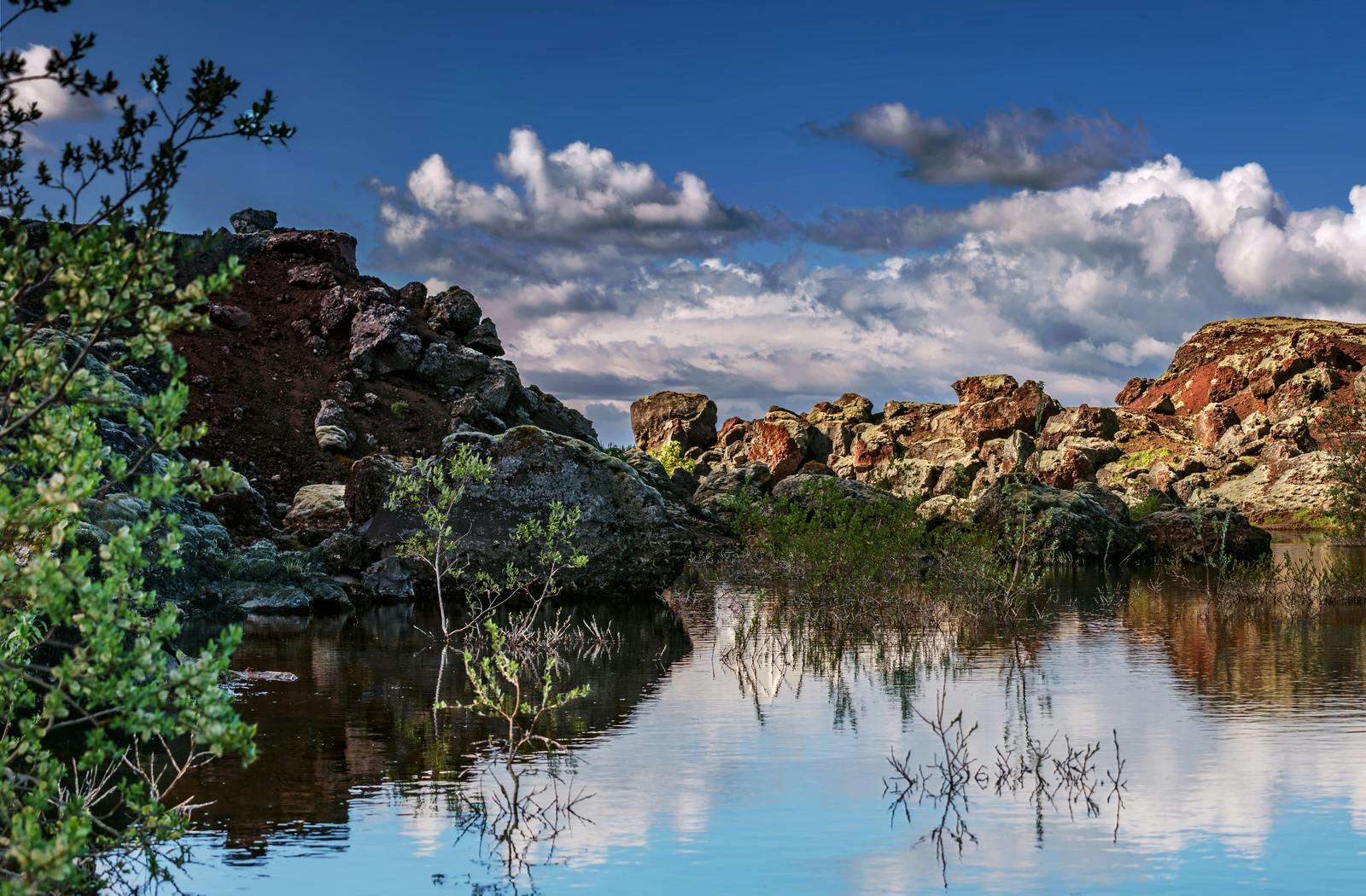
Lake Mývatn, situated in the north of Iceland, is a geologically and ecologically rich freshwater lake that captivates visitors with its stunning beauty and diverse landscapes. Formed by a large basaltic lava eruption over 2,000 years ago, the lake and its surroundings boast a unique mix of volcanic craters, pseudocraters, and bizarre rock formations.
The name "Mývatn" translates to "Midge Lake," reflecting the abundance of these tiny insects that flourish in the area, particularly during the summer months. Despite the presence of midges, the lake is a haven for birdwatchers, as it serves as a nesting ground for various bird species. The surrounding wetlands provide a vital habitat for waterfowl, making Mývatn a paradise for ornithology enthusiasts.
With its rich biodiversity, geological wonders, and unique ecosystems, Lake Mývatn stands as a testament to the natural beauty that defines Iceland, inviting travellers to immerse themselves in its enchanting and ever-changing scenery.
Dettifoss Waterfall
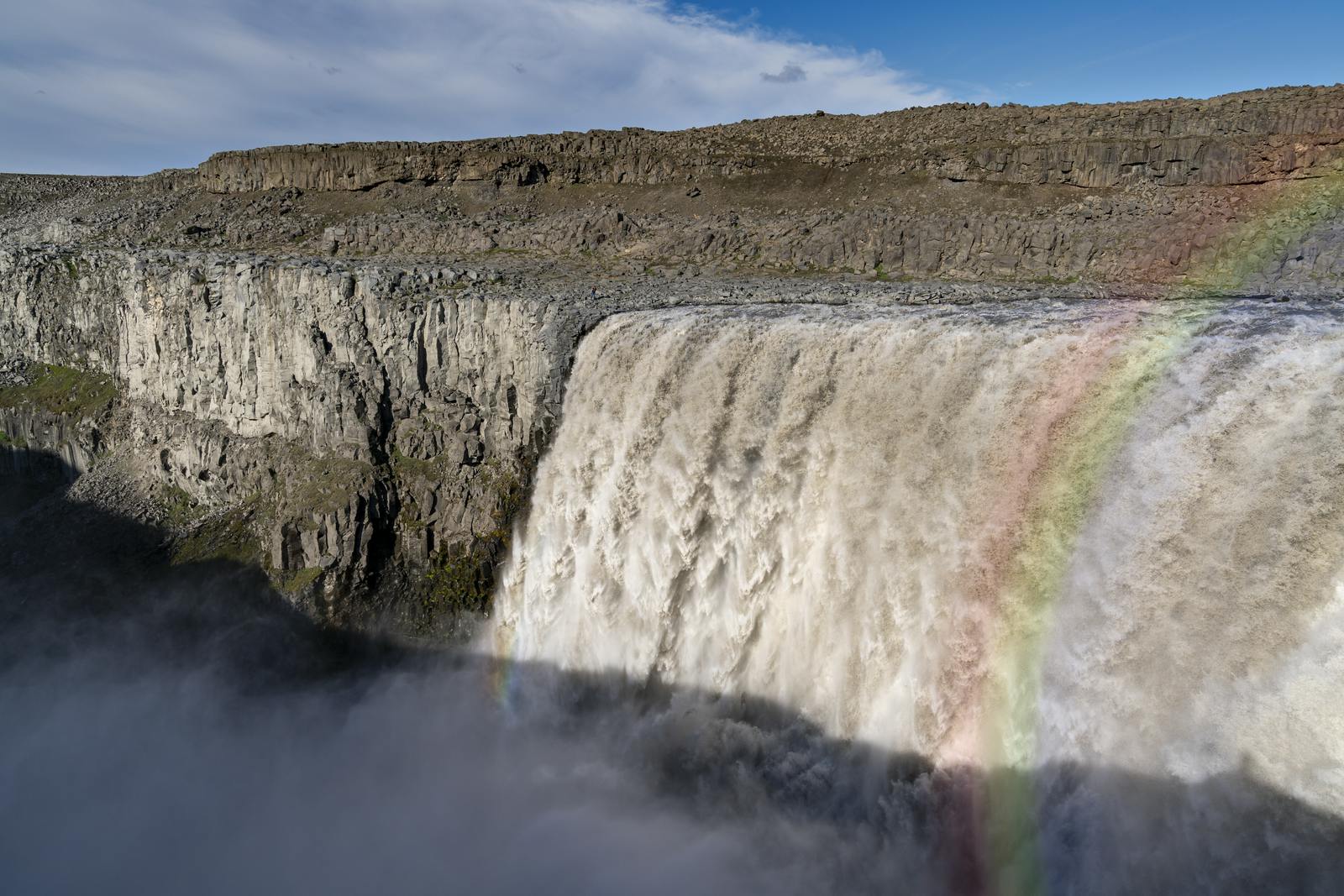
Dettifoss, Europe's most powerful waterfall, is a mesmerising natural wonder located in the Vatnajökull National Park in northeastern Iceland. Carved by the powerful Jökulsá á Fjöllum river, Dettifoss cascades over a rugged cliff with immense force and grandeur, creating a spectacle that leaves a profound impression on all who witness it.
With a width of 100 metres (330 feet) and a drop of 45 metres (150 feet), the sheer volume of water thundering down the falls is awe-inspiring. The milky glacial water contrasts sharply with the dark basalt columns that frame the waterfall, adding to its dramatic beauty. The thunderous roar and the fine mist that permeates the air contribute to the sensory experience, making Dettifoss a truly immersive natural phenomenon.
Access to Dettifoss is facilitated by well-maintained trails and viewing platforms, allowing visitors to appreciate the waterfall from various vantage points. The site's remote location imparts a sense of untouched wilderness, enhancing the overall adventure for those who venture to witness the raw power and breathtaking beauty of Dettifoss, an iconic landmark in Iceland's rugged and pristine landscape.
Ásbyrgi Canyon
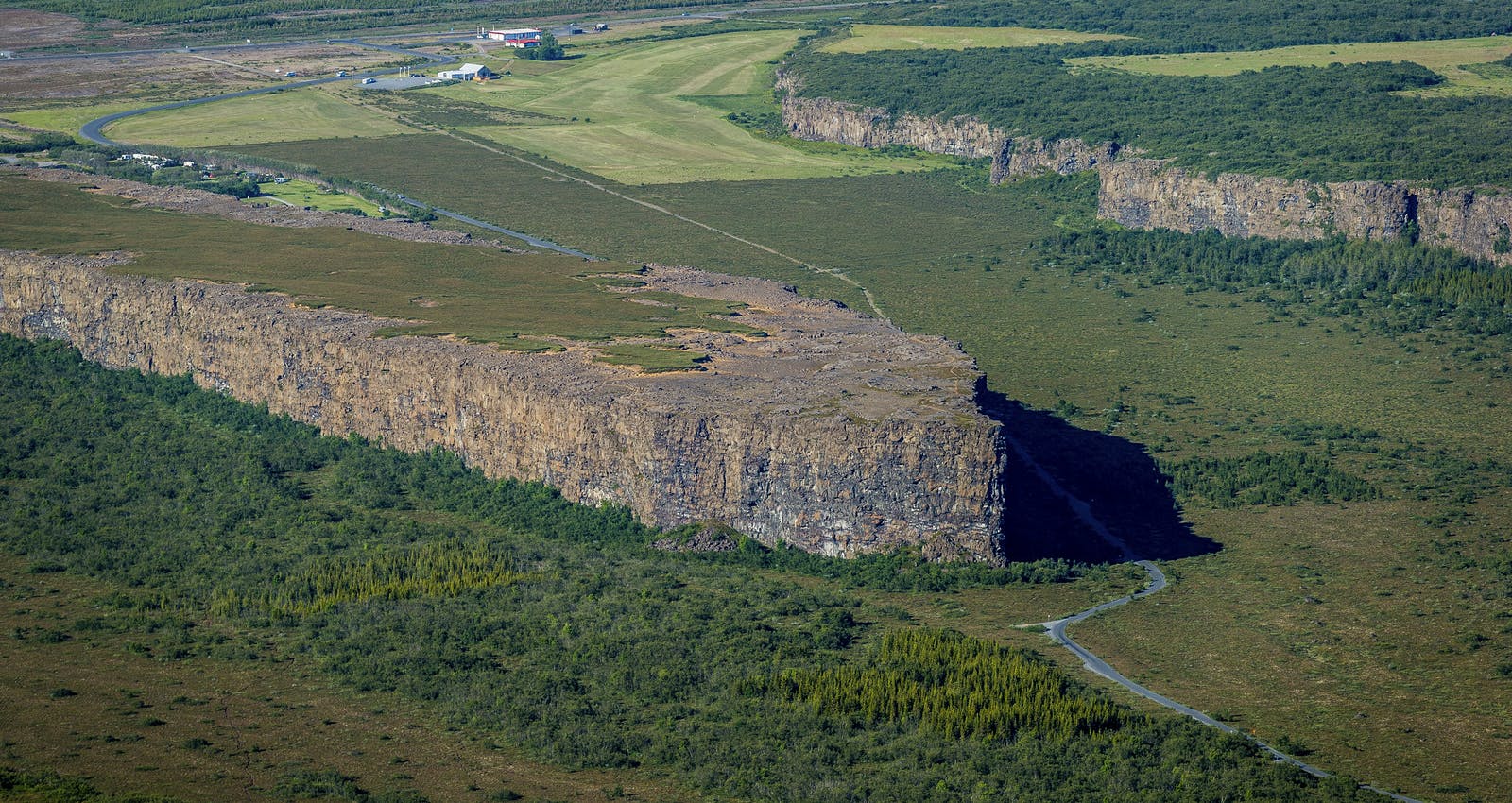
Ásbyrgi Canyon, nestled within the Vatnajökull National Park in northern Iceland, is a geological marvel and a place of mythical allure. Shaped like a horseshoe, the canyon stretches over 3.5 kilometres (approximately 2 miles) and boasts towering cliffs that reach up to 100 metres (328 feet) in height. Legend has it that Ásbyrgi was formed when the hoofprint of Sleipnir, the eight-legged horse of Norse mythology, touched the ground.
The canyon's unique geology and diverse flora make it a haven for nature enthusiasts. Lush woodlands, meandering streams, and vibrant wildflowers create a picturesque setting, inviting visitors to explore its network of hiking trails. The Botnstjörn pond, nestled at the heart of Ásbyrgi, reflects the surrounding cliffs, adding to the area's ethereal beauty.
One of the key attractions within Ásbyrgi is the distinctive rock formation called Eyjan, or "The Island," which rises from the centre of the canyon. This geological feature, along with the serene atmosphere and breathtaking views, makes Ásbyrgi a tranquil and captivating destination.
Whether hiking the trails, marvelling at the geological formations, or simply absorbing the tranquillity of the surroundings, Ásbyrgi Canyon offers a serene escape into Iceland's untouched wilderness, leaving visitors with a deep appreciation for the country's natural wonders.
Húsavík

Húsavík, a charming coastal town situated on the northern shores of Iceland, serves as a captivating highlight within the Diamond Circle tourist route. Renowned as the "Whale Watching Capital of Iceland," Húsavík offers a unique and immersive experience for visitors exploring the diverse landscapes of the Diamond Circle.
With a backdrop of panoramic mountains, Húsavík's harbour is a bustling hub for maritime activities. The town's identity is deeply intertwined with its commitment to sustainable and responsible whale watching, attracting nature enthusiasts from around the world. Boat excursions from Húsavík provide an opportunity to witness majestic marine life, including humpback whales, minke whales, and orcas, against the stunning backdrop of the Arctic Ocean.
Beyond its maritime allure, Húsavík offers a glimpse into Icelandic culture. Visitors can explore the Húsavík Whale Museum, providing insights into the history and significance of whaling in the region. The iconic wooden church, Húsavíkurkirkja, with its unique architectural charm, stands as a symbol of the town's rich heritage.
As a pivotal stop on the Diamond Circle, Húsavík's blend of natural beauty, cultural richness, and commitment to responsible tourism makes it an essential and memorable part of the Icelandic adventure along this captivating route.
Goðafoss Waterfall
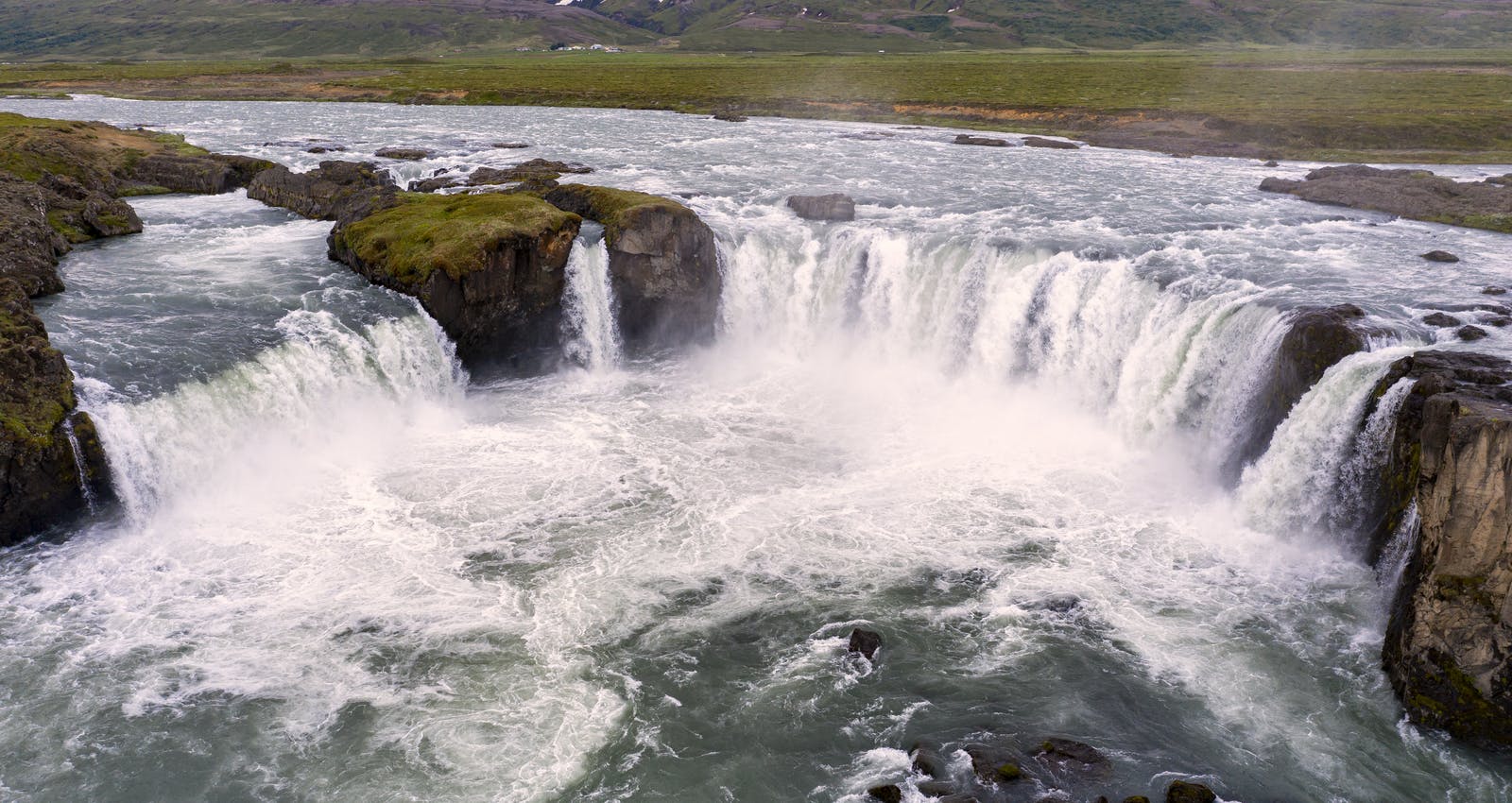
Goðafoss, known as the "Waterfall of the Gods," is a spectacular natural wonder situated along the Diamond Circle route in northern Iceland. Carved by the Skjálfandafljót River, this majestic waterfall plunges 12 metres (39 feet) over a curved edge with a width of 30 metres (98 feet) into a serene and picturesque pool creating a breathtaking display of cascading water and mist.
Legend has it that Goðafoss earned its name when Thorgeir Thorkelsson, a chieftain and Lawspeaker of the Althing (Iceland's parliament) in the year 1000 AD, decided to adopt Christianity as the official religion. To symbolise this conversion, Thorgeir threw statues of the Norse gods into the waterfall, signifying the transition from paganism to Christianity.
The falls are surrounded by a rugged, rocky landscape, providing a picturesque setting for visitors. Viewing platforms on both sides of the river offer excellent vantage points to appreciate the grandeur of Goðafoss and capture its beauty through photography.
Whether visiting during the long summer days or the enchanting winter months when the falls may freeze into a crystalline spectacle, Goðafoss stands as a testament to Iceland's natural splendour, cultural history, and the seamless integration of myth and landscape along the Diamond Circle route.
Natural Wonders of Iceland
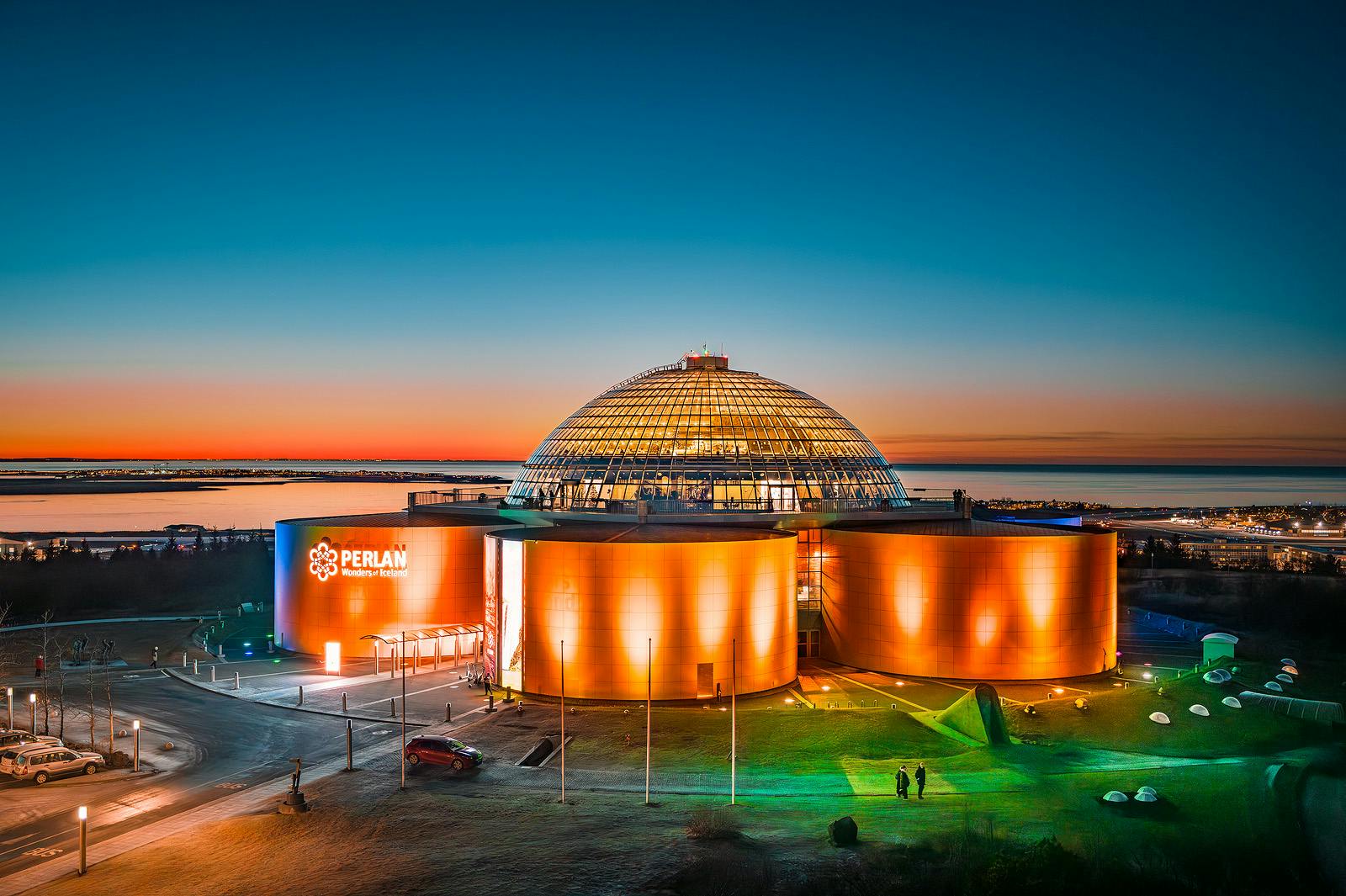
Explore the diverse geological wonders of Iceland at the Perlan Museum in Reykjavík. Delve into the intricate facets of Icelandic nature through a series of comprehensive exhibitions that showcase the country's unique features. From the significance of water in Icelandic nature to the awe-inspiring realms of glaciers and ice caves, the museum takes you on an in-depth journey.
With its array of exhibitions, the Perlan Museum offers a holistic and captivating exploration of Iceland's geological wonders, consolidating the essence of the country's nature within a single location.
FAQ
Why Is It Called Diamond Circle?
The Diamond Circle in Iceland is named for the shape of the route, which forms a circle or diamond-like pattern on the map. The attractions along the route are like the facets of a diamond, each offering a unique and valuable experience for travellers.
Where Does the Diamond Circle Start?
The Diamond Circle typically starts and ends in the town of Húsavík, located on the northern coast of Iceland. Húsavík is known for its picturesque setting, whale-watching opportunities, and access to various natural wonders, making it an ideal starting point for the journey.
Where Is the Diamond Circle?
The Diamond Circle route covers the northern part of Iceland, including attractions such as Godafoss waterfall, Lake Mývatn, Húsavík, Akureyri, Dettifoss waterfall, Ásbyrgi Canyon, and more.







